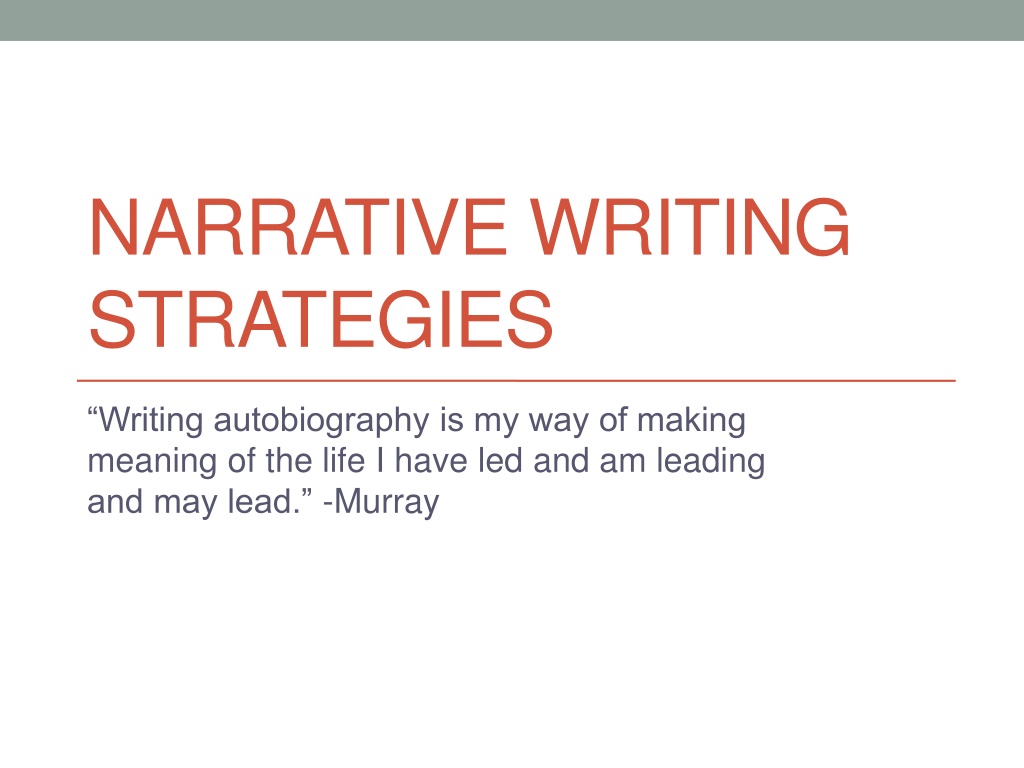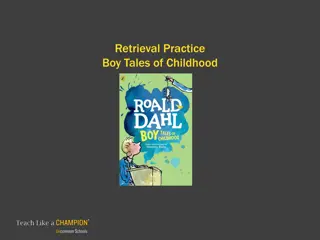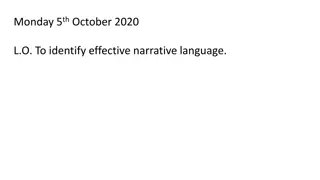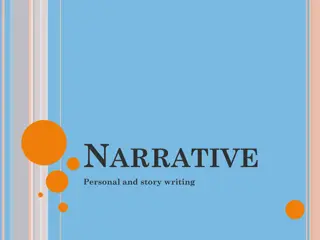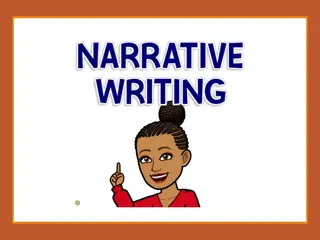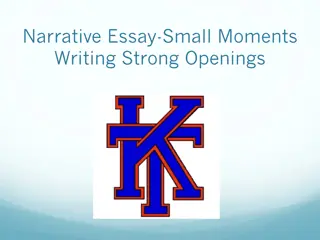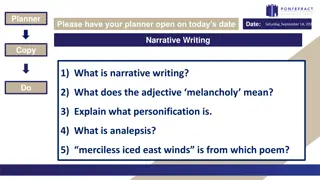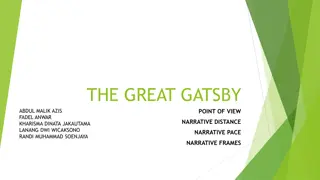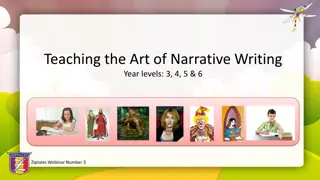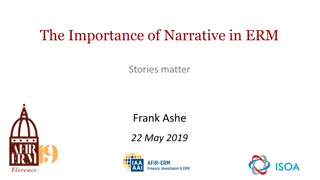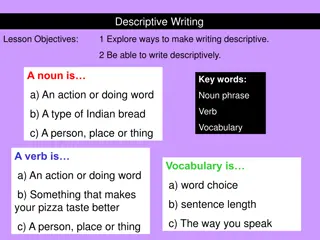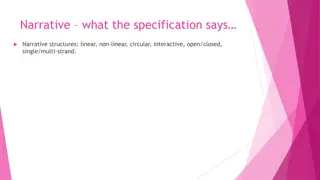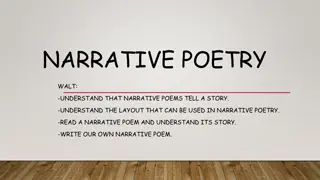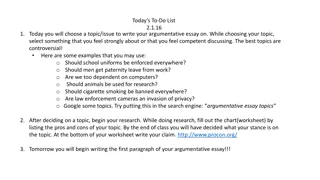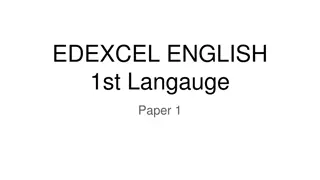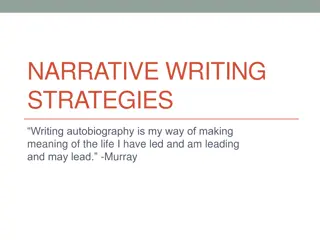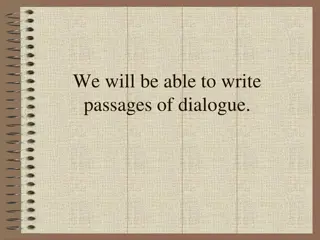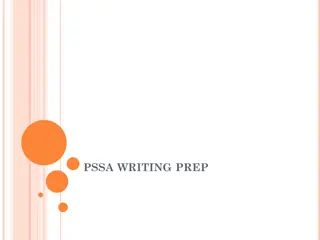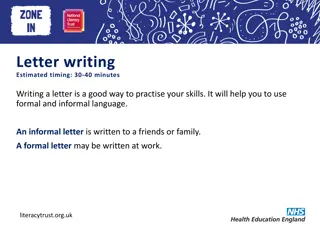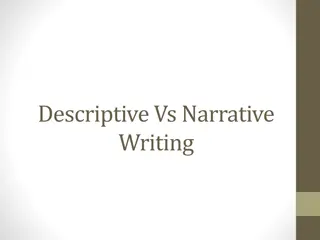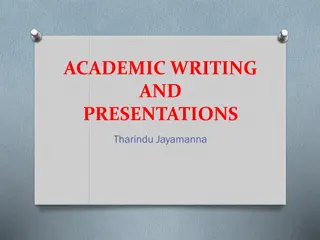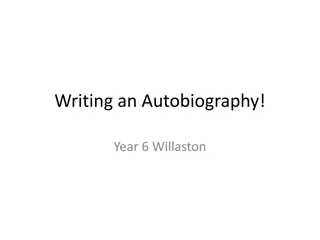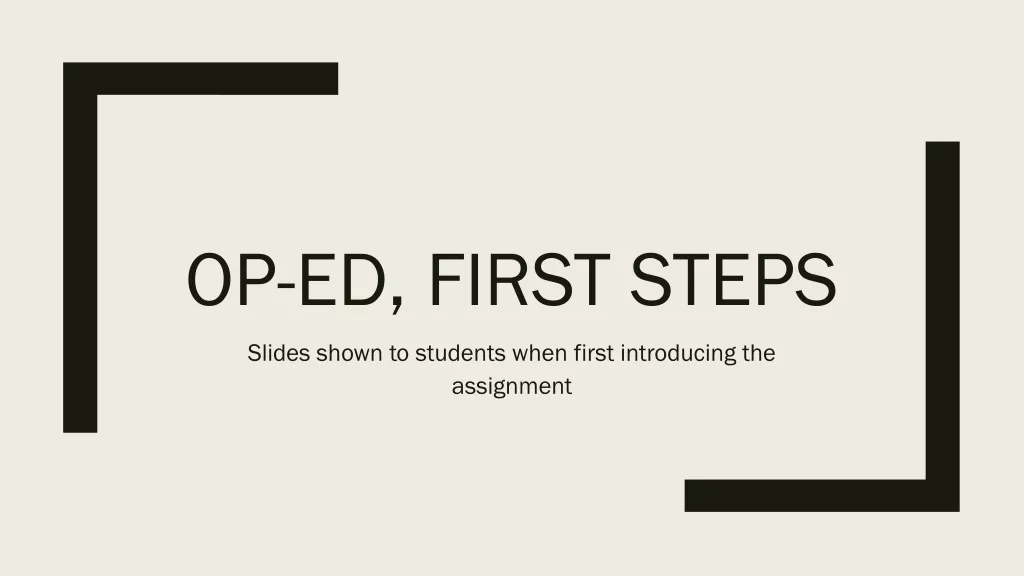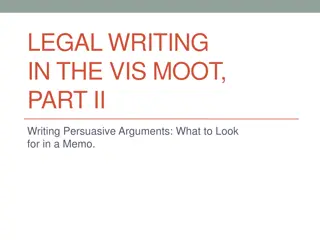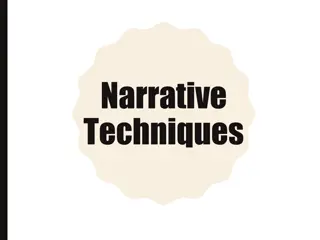Exploring Narrative Writing: Techniques for Crafting an Engaging Autobiography
Crafting an autobiography through narrative writing is a powerful way to reflect on one's life experiences. This content delves into strategies such as character and setting descriptions, sensory details, realistic dialogue, and tone to engage readers and bring the story to life.
Download Presentation

Please find below an Image/Link to download the presentation.
The content on the website is provided AS IS for your information and personal use only. It may not be sold, licensed, or shared on other websites without obtaining consent from the author. Download presentation by click this link. If you encounter any issues during the download, it is possible that the publisher has removed the file from their server.
E N D
Presentation Transcript
NARRATIVE WRITING STRATEGIES Writing autobiography is my way of making meaning of the life I have led and am leading and may lead. -Murray
Character and Setting Description Details about what makes the characters and places unique Use exact names specificity is key
Example of Character Description You should know that my mother s expressive command of English belies how much she actually understands. She reads the Forbes report, listens to Wall Street Week, converses daily with her stockbroker, reads all of Shirley MacLaine s books with ease all kinds of things I can t begin to understand (Tan).
Sensory Detail Information about what the character/narrator sees, smells, hears, feels, and tastes. Connected to memory. Vivid description and detail makes the reader feel as if he or she is really there.
Example of Sensory Detail I knew what the tests were asking, but I could not block out of my mind the images already created by the first pair, sunset is to nightfall and I would see a burst of colors against a darkening sky, the moon rising, the lowering of the curtain of stars (Tan). As we were sitting there, we suddenly heard the sound of an oncoming train a sound that startled me so that it evoked another long-suppressed memory: that of crossing the train tracks in my father s car (hooks).
Realistic Dialogue Brings the characters to life; gives them realistic voices. Helps the reader get to know the characters and their personalities. Advances the action of the story. Scrap unnecessary dialogue. Indented and uses quotation marks.
Examples of Realistic Dialogue And my mother was standing in the back whispering loudly, Why he don t send me check, already two weeks late. So mad he lie to me, losing my money. And then I said in perfect English, Yes, I m getting rather concerned. You had agreed to send the check two weeks ago, but it hasn t arrived (Tan).
Tone Humor, anger, sarcasm, frustration, sadness, etc. Verb choice (not too many adverbs) We often contradict an opinion for no other reason than the tone in which it is expressed. -Nietzsche
Examples of Tone She wouldn t budge. And when the doctor finally called her daughter, me, who spoke in perfect English lo and behold we had assurances the CAT scan would be found, promises that a conference call on Monday would be held, and apologies for any suffering my mother had gone through for a most regrettable mistake (Tan).
Pacing How fast or slow is the story moves. Emphasizes certain parts of the story often through repetition and keeps the reader s interest. Length of sentences.
Examples of a Fast(er) Pace I had met a young black man. We were having an affair. It is important that he was black. He was in some mysterious way a link to this past that I had been struggling to grapple with, to name in writing (hooks).
Comparisons (Metaphors and Similes) Helps the reader understand how a feeling, place, person, or event is similar to and/or different from something else.
Example of Metaphorical Language Conceptually, the autobiography was framed in the manner of a hope chest. I remembered my mother s hope chest, with its wonderful odor of cedar, and thought about her taking the most precious items and placing them there for safekeeping. Certain memories were for me a similar treasure (hooks).
Talking Directly to the Reader In most stories, the narrator talks to an ambiguous someone. Sometimes, though, the narrator breaks this writer/reader barrier by addressing the reader directly. Maintain the device throughout.
Example of Talking Directly to the Reader I am not a scholar of English or literature. I cannot give you much more than personal opinions on the English language and its variations in this country or others (Tan). So you ll have some idea of what this family talk I heard sounds like, I ll quote what my mother said during a recent conversation (Tan). You should know that my mother s expressive command of English belies how much she actually understands (Tan).
Reflection Explains the significance of the event or experience. Provides resolution and insight. https://kellyannparrydotcom.files.wordpress.com/2013/08/reflection.jpg?w=300h=214 Very important!
Example of Reflection But [these labels] seemed just as bad, as if everything is limited, including people s perceptions of the limited English speaker. I know this for a fact, because when I was growing up, my mother s limited English limited my perception of her. I was ashamed of her English. I believed that her English reflected the quality of what she had to say. That is, because she expressed them imperfectly, her thoughts were imperfect (Tan).
